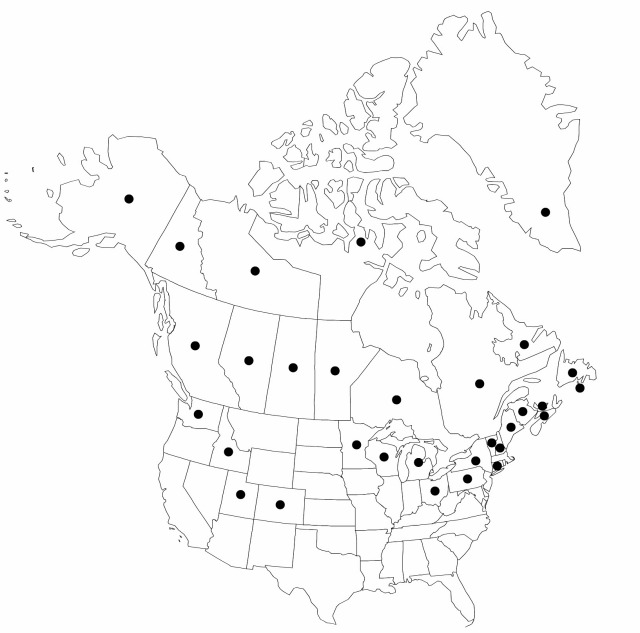Difference between revisions of "Carex magellanica subsp. irrigua"
Suom. Kasvio, 161. 1933.
FNA>Volume Importer |
FNA>Volume Importer |
(No difference)
| |
Revision as of 19:10, 24 September 2019
Culms mostly phyllopodic, with dead leaf remains at base, 10–80 cm. Leaf blades 1–4 mm wide, margins revolute, scabrid. Inflorescences: proximal bracts 3–15 cm, equaling or exceeding inflorescences; lateral spikes, at least the proximal, usually with 1–3 staminate flowers at base, 6–22 × 4–8 mm, with 5–20 perigynia; terminal spikes occasionally gynecandrous with 1–8 pistillate flowers, 7–20 × 1–4 mm. Pistillate scales lanceolate, 2.8–7 × 1.1–2 mm, longer, narrower than perigynia, apex acute to acuminate, often awned to 3 mm. Staminate scales oblanceolate to obovate, 4–6 × 1–1.6 mm, apex obtuse to acute. Anthers 1.6–2.5 mm. Perigynia 2.5–3.6 × 1.8–2.5 mm, apex rounded; beak absent or to 0.2 mm. 2n = ca. 60.
Phenology: Fruiting summer.
Habitat: Bogs, fens, marshes, usually associated with Sphagnum
Elevation: 0–2000 m
Distribution

Greenland, St. Pierre and Miquelon, Alta., B.C., Man., N.B., Nfld. and Labr., N.W.T., N.S., Nunavut, Ont., P.E.I., Que., Sask., Yukon, Alaska, Colo., Conn., Idaho, Maine, Mich., Minn., N.H., N.Y., Ohio, Pa., Utah, Vt., Wash., Wis., Eurasia.
Discussion
Carex magellanica is one of the bipolar disjunct species of Carex discussed by D. M. Moore and A. O. Chater (1971). Carex magellanica subsp. magellanica occurs in cool temperate regions of South America. It is distinguished from C. magellanica subsp. irrigua by the terminal spike being almost always gynecandrous, the lateral spikes with (2–)3–7 staminate flowers, and the pistillate scales (1.3–)1.6–2.3 mm wide.
Selected References
None.